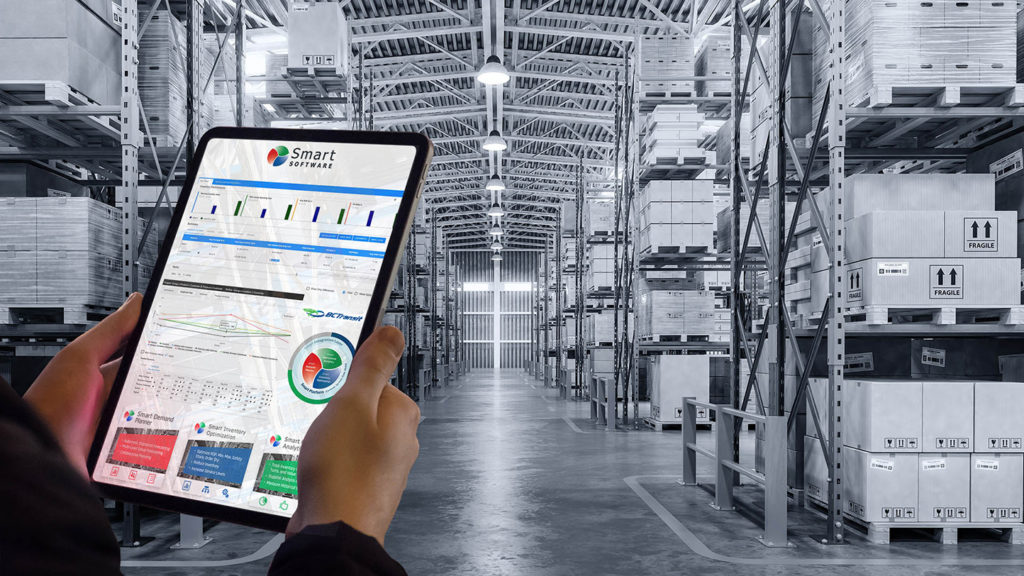Introduction
BC Transit’s vision statement is to be Your Best Transportation Solution. BC Transit accomplishes this by transporting 57 million annual passenger trips in over 130 communities across British Columbia. Transit is becoming a key part of the solution for many of the complex challenges that communities face across the province, such as climate change, affordability and congestion, and as a result transit service is expanding quickly (9 per cent growth in the past five years). Delivery of this service in a safe and timely manner is paramount. BC Transit’s fleet of 1,185 buses require regular maintenance and rapid repairs to ensure they are as effective and efficient as possible. Having the right part in the right place at the right time is essential. Eric Nelson, Director of Supply Services, discussed the challenges of meeting this responsibility and how their use of Smart Software technology is helping make BC Transit the best transportation solution.
The Challenge:
BC Transit was preparing to centralize warehouse operations around a new central distribution center, just as the organization was preparing to upgrade to a new version of its JD Edwards Enterprise Resource Planning (ERP) system. They needed to determine the right stocking levels to serve the entire BC Transit network with 35 active branch plants under an aggressive timeline. In a matter of weeks, the transition would begin to their new ERP and wholesale system updates would be barred.
This was no small matter as BC Transit manages 30,000 discrete skus. Space in the new consolidated Provincial Distribution Centre would be at a premium, and parts planning was a highly manual, qualitative process. Reorder points were set manually, based on weekly requisitions and the buyers’ knowledge and judgement. The move to the new CDC model would require setting optimal reorder points for all stocked parts. The existing process would not be able to do this – there were just too many parts.
Compounding the challenge was the highly intermittent nature of BC Transit parts demand. Rather than following a routine, easily forecastable pattern, service parts often experience highly sporadic, seemingly random demand. Qualitative methods and intuition would not ensure the 95% service level that BC Transit required. The organization needed a better solution.
 The Solution:
The Solution:
BC Transit turned to Smart Software. Nelson was aware of Smart’s work with other transit systems and was drawn to Smart Inventory Planning & Optimization for a number of reasons:
- Service level-driven planning methodology with probabilistic modeling, enabling ‘what if’ scenario development. and cost vs. performance trade-offs;
- Proven ability to plan for intermittent demand, demonstrated across multiple transit customers;
- Cloud-based suite of web applications, providing anywhere access and eliminating the need for IT infrastructure; and
- Automated data integration and analytics, providing the continuous flow of data from and the return of optimal Min/Max drivers to JD Edwards to drive replenishment.
Smart and BC Transit worked through an accelerated implementation process to get their initial system up and running within two months. BC Transit was able to establish stocking policies to get the new warehouse and central distribution system up and running. Once initial policies were set, they used the first year of operations to monitor and refine reorder points.
“The big change,” says Nelson, “was to shift from the qualitative, manual establishment of reorder points to a highly automated system of setting Min/Max values for all active parts.”
Year 1 focused on getting the process working and relating the new capabilities to overall supply chain operations. The experience established confidence in the system. Their enhanced planning process now treats new items manually until they experience three incidents of demand. At that point the demanded parts transition into production planning and are included in the routine, monthly automated process. Plans are now underway to push Min/Max planning out to the 28 regional transportation systems and all 35 stocking locations.
Results:
“We could not have consolidated central distribution into one facility without Smart,” says Nelson. “During the transition we discovered a need for 3,000 additional SKUs. There just wouldn’t have been room. It is difficult to put a monetary value on this.”
Using Smart IP&O, BC Transit was able to internalize the impact of centralizing all external shipments. They were able to consolidate demand for all regional transit systems and foresee required stocking levels. Nelson added, “we did not see any instance of incorrect forecasts. And we were able to set policies effectively for parts with exceptionally sparse demand.”
BC Transit values its newfound ability to forecast the financial impact of stocking decisions. They are able to balance capacity against criticality and the cost of inventory. They have been able to reduce the number of orders, determine optimal order quantities, and deal with variability of lead time – especially long lead times. “Smart IP&O has enabled us to utilize service level as a driving KPI, essentially risk adjusting our inventory to address the criticality of not running out, and to deal with the thorny challenges of seasonal and intermittent demand. It is helping us keep our buses on the road, so we can be the best transportation solution for our partners across British Columbia.”









